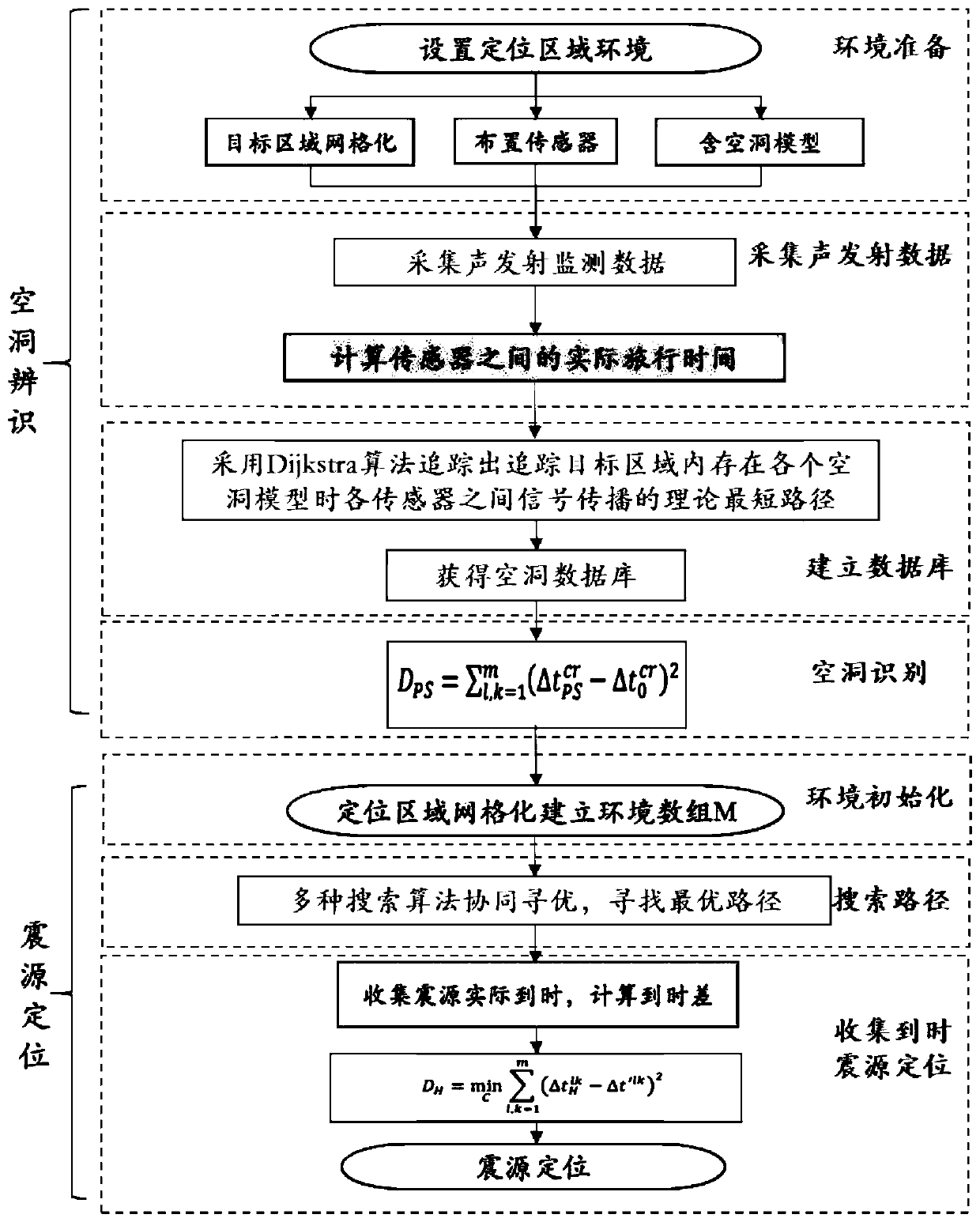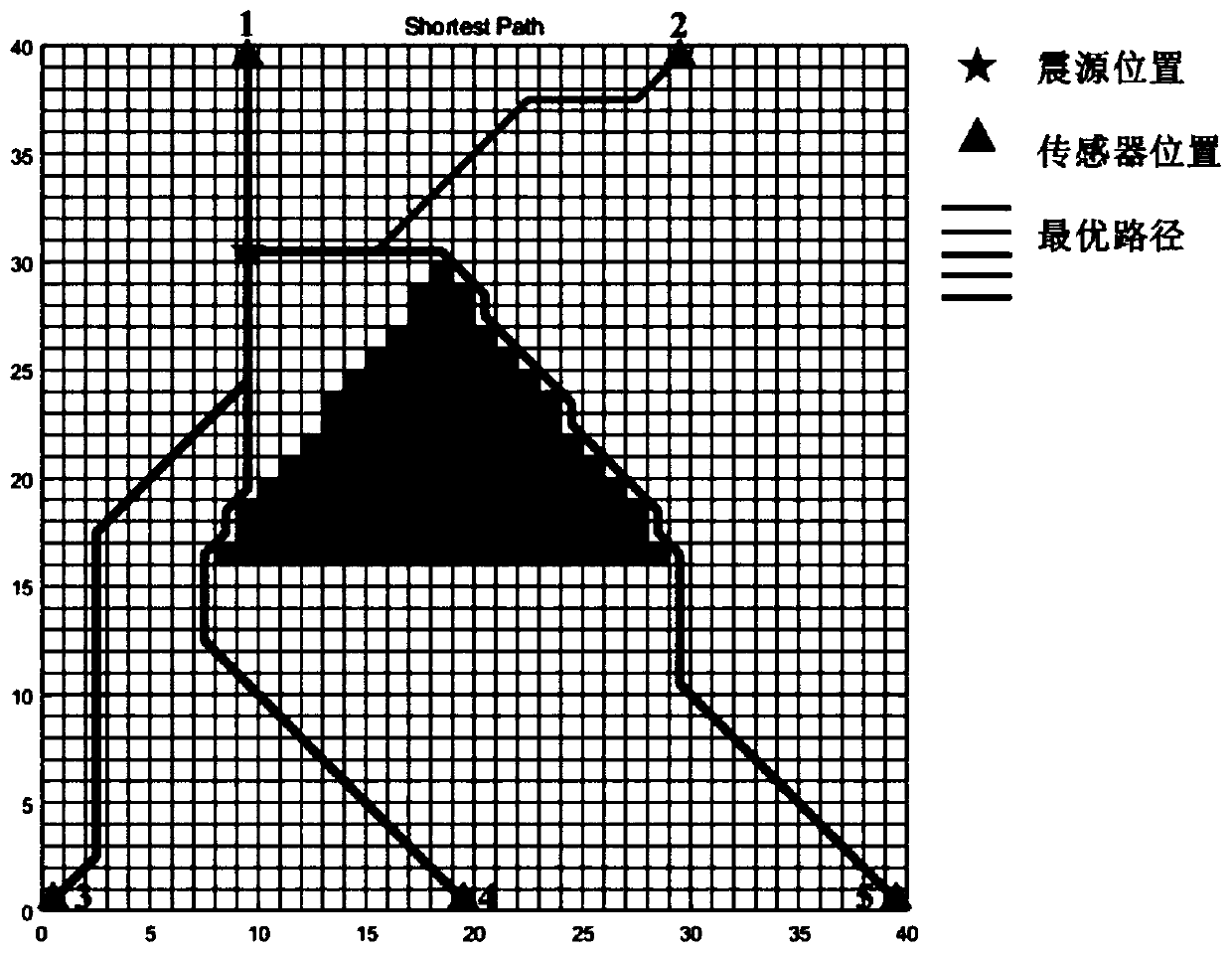Positioning method and system for target area seismic source containing unknown cavity
A technology for target area and source location, applied in seismology, seismic signal processing, measurement devices, etc., can solve problems such as narrow application range, and achieve the effect of wide application prospect, wide application range and simple operation
- Summary
- Abstract
- Description
- Claims
- Application Information
AI Technical Summary
Problems solved by technology
Method used
Image
Examples
Embodiment 1
[0047] This embodiment discloses a seismic source location method with an unknown cavity location, including the following steps:
[0048] Step 1. Identify the position of the cavity; specifically, the following steps are included:
[0049] On-site data collection: arrange m acoustic emission sensors at different positions in the target area, and collect the actual travel time of signals between each acoustic emission sensor on site; where m is an integer greater than or equal to 4;
[0050] Simulation analysis: construct multiple cavity models with different positions, sizes, and shapes for the target area; for each cavity model, track the shortest path of signal propagation between the acoustic emission sensors when the cavity model exists in the target area, so as to obtain the Theoretical travel time of signals between AE sensors;
[0051] Cavity position identification: calculate the deviation between the theoretical travel time and the actual travel time of the signals ...
Embodiment 2
[0055] In this embodiment, on the basis of Embodiment 1, the acoustic emission sensors all have the function of transmitting pulse signals.
Embodiment 3
[0057] This embodiment is based on Embodiment 2. In the step 1, set the active seismic source, that is, the acoustic emission sensor that emits the pulse signal as S c , the time of its pulse signal emission is The rth acoustic emission sensor S r Received S c The actual time of the transmitted pulse signal is Then the acoustic emission sensor S c with acoustic emission sensor S r The actual travel time of the signal between is:
PUM
 Login to View More
Login to View More Abstract
Description
Claims
Application Information
 Login to View More
Login to View More - R&D
- Intellectual Property
- Life Sciences
- Materials
- Tech Scout
- Unparalleled Data Quality
- Higher Quality Content
- 60% Fewer Hallucinations
Browse by: Latest US Patents, China's latest patents, Technical Efficacy Thesaurus, Application Domain, Technology Topic, Popular Technical Reports.
© 2025 PatSnap. All rights reserved.Legal|Privacy policy|Modern Slavery Act Transparency Statement|Sitemap|About US| Contact US: help@patsnap.com



